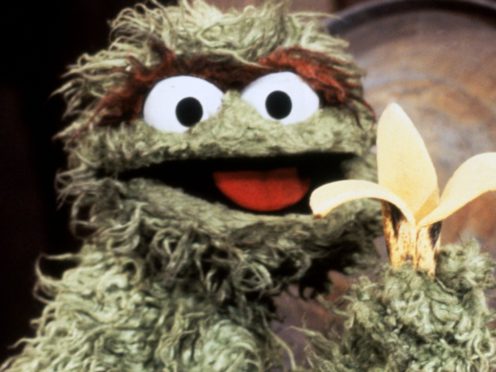Sesame Street fans have shared their confusion after the children’s TV programme announced its first homeless character, with many asking: What about Oscar the Grouch?
The long-running American educational series has revealed efforts to help tackle the homelessness crisis with the revelation its character Lily, a seven-year-old pink Muppet, and her family have lost their home.
Lily, who was introduced to the programme in 2011, has previously talked about her family’s struggle to find enough food to eat and in a new video shared by Sesame Street, she tells human character Sofia and Muppet Elmo: “We don’t have our own apartment anymore, and we’ve been staying in all different kinds of places.”
We are proud to announce new resources on @SesameCommunity around the topic of family homelessness. With activities, storybooks & more, our resources can offer help, healing & hope to families without a permanent place to stay. https://t.co/v51GxooXcP #SesameCommunity pic.twitter.com/lDngukLNfE
— Sesame Street (@sesamestreet) December 12, 2018
The programme has also announced new resources on its Sesame Community website on the topic of family homelessness to “offer help, healing and hope to families without a permanent place to stay”.
While many applauded Sesame Street’s milestone move, many others pointed out that Oscar the Grouch – who has appeared in the show since its first episode in 1969 – also appears to be homeless and resides in a rubbish bin.
One fan wrote on Twitter: “How is Lily the first ‘homeless puppet’ on Sesame Street when Oscar has lived in a trash can for decades?”
How is Lily the first "homeless puppet" on Sesame Street when Oscar has lived in a trash can for decades?#SesameStreet
— Big J aka "Sicko Klown" (@KlownyJ) December 12, 2018
Another said: “I know we should feel sorry for her but like Oscar has been in a garbage can for DECADES and we just ignore his houseless situation just because he’s made the garbage his ‘home’? #oscarthegrouch #homelessness.”
I know we should feel sorry for her but like Oscar has been in a garbage can for DECADES and we just ignore his houseless situation just because he’s made the garbage his “home”? #oscarthegrouch #homelessness https://t.co/PFio2tEnyQ
— lando (@landonjumpoff) December 12, 2018
One fan said Sesame Street’s move was “balogna” because they are “trying to say they broke the glass ceiling for a homeless character”.
They added: “What about Oscar! The grouch who actually LIVED in a trashcan.”
I love heartwarming things as much as the next person but Sesame Street this is balogna. They r trying to say they broke the glass ceiling for a homeless character! What about Oscar! The grouch who actually LIVED in a TRasHcAn . :,) luv u Oscar pic.twitter.com/nZocQRisuH
— . (@_Cathleen__) December 13, 2018
“Lily, a muppet on Sesame Street, is the first character to experience homelessness on the show. Are they sure? Oscar the grouch lives in a trash can with a pet worm. I don’t think he’s doing too well,” another person said.
Lily, a muppet on Sesame Street, is the first character to experience homelessness on the show. Are they sure? Oscar the grouch lives in a trash can with a pet worm. I don’t think he’s doing too well. #pbs #sesamestreet
— funnycrat (@funnycrat) December 12, 2018
But others defended the show, and said Oscar’s home is the trash can.
One fan wrote: “Excuse me, that’s Oscar’s pad. Does no one remember the episode where they showed inside the can?”
Excuse me, that’s Oscar’s pad. Does no one remember the episode where they showed inside the can?
Don’t Sesame Street if you can’t Sesame Street. #SesameStreet
— Rachel J. (@RachelOsiris) December 13, 2018
Another wrote: “Oscar the Grouch is NOT homeless!
“He chooses to live in that trash can because he loves trash, and for those of you who weren’t avid Sesame Street viewers, there is actually a lot more to that glorious, garbage can than meets the eye.”
Oscar the Grouch is NOT homeless! He chooses to live in that trash can because he loves trash, and for those of you who weren’t avid Sesame Street viewers, there is actually a lot more to that glorious, garbage can than meets the eye. 😄 pic.twitter.com/Yf0tuSHQld
— Leslie (@NubianLuv6) December 12, 2018
In the film The Adventures Of Elmo In Grouchland, it was revealed Oscar’s trash can is bigger on the inside than the exterior, and includes a number of luxurious amenities.
Sesame Street will celebrate its 50th year on screens in 2019.
